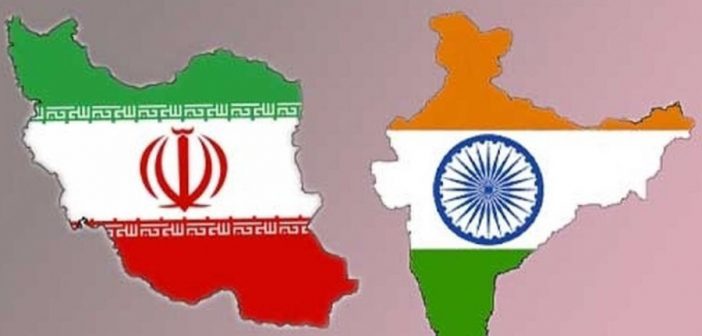The past decade has been a whirlwind for India-Iran trade relations, a complex tango of flourishing commerce, external pressures, and strategic considerations. This article delves into the trajectory of this bilateral trade, exploring its highs and lows, while also shedding light on the significance of India’s recent condolence for the deceased Iranian president Ebrahim Raisi who died in a helicopter crash in Iran earlier this week.
A Buoyant Beginning: The Golden Years of Oil Trade (2010-2014)
The early 2010s marked a golden era for India-Iran trade, fueled by India’s insatiable appetite for energy. Iran emerged as India’s second-largest oil supplier, a lifeline as the nation’s economy boomed. Iranian crude oil, priced competitively and geographically close, became a cornerstone of the relationship. This translated into billions of dollars in trade, with India’s exports to Iran, primarily basmati rice, pharmaceuticals, and machinery, playing a supporting role. The bonhomie extended beyond trade, with cultural exchanges and a shared historical heritage strengthening the bond. Tourists from both nations flocked to explore each other’s rich tapestry of history and culture.
External Pressures and a Shifting Landscape (2014-2018)
This period witnessed a significant shift. International sanctions imposed on Iran’s nuclear program cast a long shadow on trade relations. The US, wary of Iran’s nuclear ambitions, pressured India to curtail oil imports. This forced India to diversify its energy sources, with imports from Iran plummeting. The trade deficit, which had previously favored Iran due to oil sales, narrowed considerably. Indian businesses, accustomed to a thriving trade route, felt the pinch. While India explored alternative oil suppliers, Iran looked for new markets for its crude. The once vibrant flow of commerce sputtered and stalled.
Navigating Challenges: The Rupee Payment Mechanism and Alternate Routes (2018-2021)
Ever reliant on Iranian oil and committed to maintaining the relationship, India devised innovative solutions. The creation of a rupee payment mechanism bypassed the US dollar-dominated financial system, allowing for continued oil purchases without violating sanctions. This ingenious move ensured a steady supply of Iranian oil, albeit at reduced volumes. This period also saw India increase its focus on non-oil trade. Agricultural products like tea and sugar found new Iranian markets, offering a glimmer of hope for diversification. However, the mechanism’s effectiveness was hampered by limitations on rupee convertibility, leading to a decline in overall trade volume. The initial euphoria of the rupee payment system gave way to the realization that a full-fledged revival of trade would require a more robust solution.
The Present: A Look Ahead and the Significance of Condolences
Today, India-Iran trade stands at a crossroads. While sanctions remain a hurdle, both nations are keen to revive their economic partnership. Discussions on a new trade deal and continued development of the Chabahar port project, a strategic initiative granting India access to Afghanistan and Central Asia, underline this intent. The Chabahar port, once completed, has the potential to be a game-changer, offering a bypass of Pakistan and a new route for Indian goods to reach Central Asia and beyond.
In this context, India’s recent condolence for the deceased Iranian president Ebrahim Raisi can be seen as an act of diplomatic pragmatism. It signifies respect for Iran’s mourning period and underscores India’s desire to maintain a stable and positive relationship. Diplomacy transcends individual leaders, and such gestures are crucial for fostering long-term ties. It is a way to signal India’s commitment to the partnership, separate from any personal or political differences with the deceased leader. A stable and prosperous Iran aligns with India’s strategic interests in the region.
Beyond Oil: The Potential for Broader Cooperation
The India-Iran trade relationship, despite its recent challenges, holds immense potential. Both nations share strategic interests in a stable and secure Afghanistan. They also face common challenges like maritime security and piracy in the Indian Ocean region. India’s growing economy presents a vast market for Iranian goods beyond oil, such as carpets, fruits, and petrochemicals. Iran, with its well-educated workforce and technological advancements, can be a partner in India’s infrastructure development and renewable energy sectors.
The Road Ahead: Challenges and Opportunities
The path forward for India-Iran trade relations is not without challenges. The US position on Iran remains an obstacle, and the effectiveness of alternative payment mechanisms needs to be improved. Bureaucratic hurdles and a lack of streamlined trade channels can also impede progress. However, the potential benefits are undeniable. A flourishing India-Iran trade partnership can be a win-win situation, boosting economic growth and regional stability.
Conclusion: A Symbiotic Future
The India-Iran trade relationship has weathered many storms over the past decade. The future holds both challenges and opportunities. By adopting a calibrated approach that balances strategic considerations with economic realities, India and Iran can unlock the full potential of this enduring partnership. Here are some additional points to consider for the conclusion:
- The Rise of New Players: The global energy landscape is constantly evolving. The emergence of new players like the US shale oil industry may impact the future dynamics of India-Iran oil trade. However, Iran’s vast oil reserves and its geographical proximity to India will likely ensure its continued relevance.
- The Importance of Connectivity: India’s investments in infrastructure projects like the Chabahar port and the International North-South Transport Corridor (INSTC) can significantly boost trade by creating new trade routes and facilitating the movement of goods.
- The Role of Technology: Technological advancements in areas like blockchain and digital currencies could offer alternative payment mechanisms that circumvent sanctions and streamline trade transactions.
A Call for Continued Engagement:
By fostering closer economic ties, cultural exchange, and strategic cooperation, India and Iran can build a robust and mutually beneficial partnership. This partnership can contribute to regional stability, economic prosperity, and a more interconnected future for both nations.





